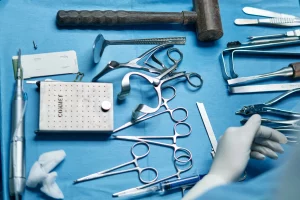This article will provide information on the surgical instruments that are used in circumcision. You will learn about the risks, complications, and time required for the procedure. In addition, you’ll learn about the numbing cream used to numb the penis and the surgical instruments used in the procedure. Hopefully, this article will help you make an informed decision about whether this procedure is right for you. We hope you enjoy this article! Just click through to learn more!
Cost of circumcision procedure
An Adult Circumcision will cost you between $200 and $438. However, you can often save more if you have an insurance plan. Insurers consider circumcision an elective procedure. This means that you won’t be required to pay more for it if you are insured. Uninsured patients may find it costly. Before you decide on a hospital, make sure to speak with your provider.

Most hospitals in India have experienced surgeons who can perform this surgical procedure. They work closely with the nurses and provide international standard health care. These facilities are equipped using the most modern equipment and infrastructure. You’ll also be able save money as the cost of circumcisions in India is less than in other countries. You’ll also be able to save a lot on the procedure compared to other hospitals around the world.
Consequences of circumcision
There are many complications Adelaide circumcision clinic with circumcision procedures. Most complications can, however, be avoided. It is essential to use the correct surgical equipment and pay attention to penile anatomy. There are many surgical mistakes that can cause minor, temporary, or serious complications. Minor complications can range anywhere from bleeding to life-threatening. However, in developed nations, penile amputations are relatively safe. If the procedure is delayed beyond infancy complications can occur, and a referral to a specialist may be necessary.
There are 47 known complications associated with male circumcision. We identified the most frequent complications as a result of male circumcision. These include infection, incomplete, redundant or redundant foreskin reduction, urethrocutaneous fostula, and bleeding related to an inherited condition. Other complications were also identified, such as penile implantation cysts and implantation of dermoid cysts. The most common types of complications are listed in Table 4.
Time frame for circumcision
When is the right time to circumcise your child? Most people will begin their children with this procedure. Some people think it is more serious, and some older men may need general anesthesia. In these cases, you might need to return to the hospital for a few more days. There are some things you need to keep in mind, such as the time frame for healing. Your child will need to fast for six hours prior to the procedure. You should then clean it every day, particularly after a bowel movement. Apply petroleum jelly liberally to the incision area.
Although the time required for circumcision procedures can vary, they are usually performed within a few days of birth. If your baby is premature, it may not be possible to circumcise them until they are fully healed from the hospital. Other reasons may include special medical concerns. A baby with a small penis, or a physical anomaly may not need to be circumcised. In these cases, the skin of the foreskin might be used for reconstructive surgery. To minimize any pain, your child may also be swaddled or placed in a pacifier to reduce stress.
Surgical instruments used in circumcision procedure
There are several surgical instruments used during the circumcision procedure. The main instruments are the scissors, scalpel and forceps. After the skin is removed, the circumcision instruments are inserted into penile glands. It has a round distal end and is connected by a wire to a handle. To separate the skin from the glans, the surgeon uses a small, circular blade attached to its handle.
The Unicirc is a surgical instrument similar to the Gomco clamp and has been evaluated in three separate adult studies. This single-use, metal- and plastic instrument creates circumferential compression around the base of the foreskin. This fusion enables a bloodless excision of the foreskin. It also prevents the need for sutures, as the edges are sealed with cyanoacrylate adhesive.
